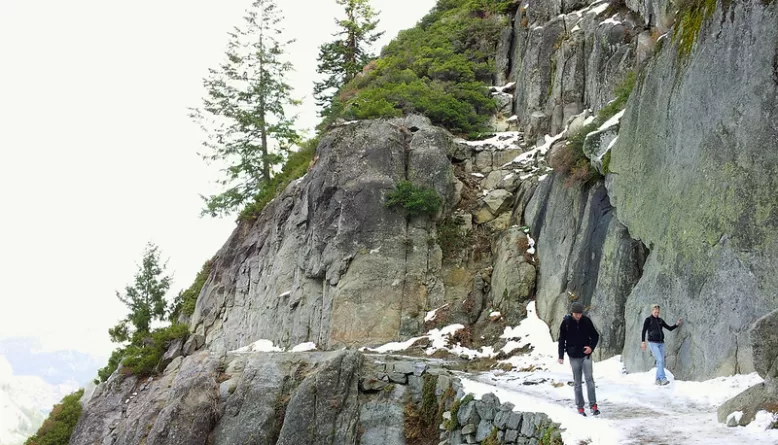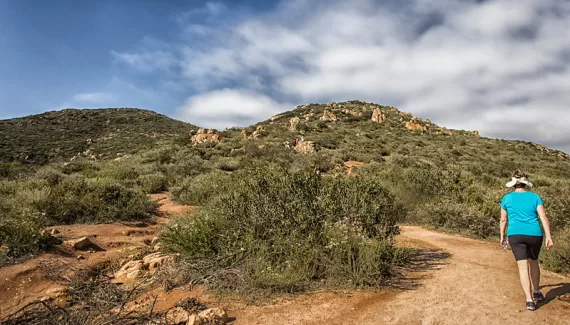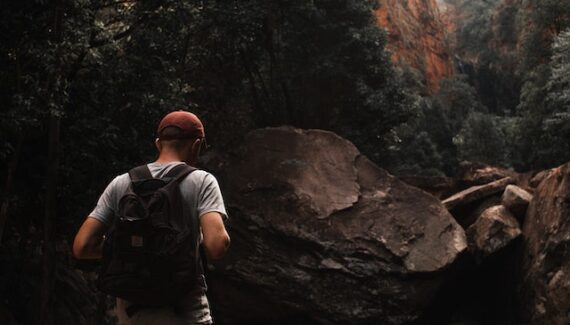Yosemite National Park is a hiker’s paradise, with its stunning vistas, waterfalls, and granite cliffs. If you’re planning a hiking trip to Yosemite, you’ll need to obtain a permit to hike in the park. In this article, we’ll guide you through the process of getting a hiking permit for Yosemite National Park.
Table of Contents
- Why do you need a hiking permit for Yosemite National Park?
- Types of hiking permits available in Yosemite National Park
- How to apply for a hiking permit in Yosemite National Park
- When to apply for a hiking permit in Yosemite National Park
- Hiking in Yosemite without a permit
- Tips for getting a hiking permit for Yosemite National Park
- Rules and regulations for hiking in Yosemite National Park
- What to do if you can’t get a hiking permit for Yosemite National Park
- How to make the most of your Yosemite National Park hiking experience
- Conclusion
- FAQs
Why do you need a hiking permit for Yosemite National Park?
Yosemite National Park is one of the most popular national parks in the United States, attracting millions of visitors every year. To protect the park’s natural resources and ensure that everyone has a safe and enjoyable experience, the park requires permits for many of its activities, including hiking.
Hiking permits help the park manage the number of visitors on its trails, prevent overcrowding, and minimize the impact on the park’s delicate ecosystem. They also ensure that hikers are prepared for the challenges of the trail and have the necessary equipment and knowledge to hike safely.
Types of hiking permits available in Yosemite National Park
Yosemite National Park offers several types of hiking permits, depending on the length and difficulty of the hike.
- Day-use permits: These permits are required for day hikes on many of Yosemite’s most popular trails, including Half Dome, Clouds Rest, and Yosemite Falls. Day-use permits are available online or at the park’s entrance stations.
- Overnight permits: If you’re planning an overnight backpacking trip in Yosemite, you’ll need to obtain an overnight permit. These permits are required for all backcountry camping and can be obtained online or in person at the park’s wilderness centers.
- Half Dome permits: Climbing Half Dome is one of Yosemite’s most popular hikes, but it requires a special permit. Half Dome permits are available through a lottery system and must be obtained in advance.
How to apply for a hiking permit in Yosemite National Park
To apply for a hiking permit in Yosemite National Park, you’ll need to follow these steps:
- Determine what type of permit you need: Are you planning a day hike or an overnight backpacking trip? Do you want to climb Half Dome? Knowing what type of permit you need will help you choose the right application process.
- Apply online or in person: Day-use permits and overnight permits can be obtained online through the park’s website. Half Dome permits must be obtained through a lottery system, also available on the park’s website. You can also obtain permits in person at the park’s entrance stations or wilderness centers.
- Pay the fee: Hiking permits in Yosemite National Park come with a fee. The fee varies depending on the type of permit and the length of your hike. You can pay the fee online or in person when you obtain your permit.
- Check the availability: Some trails and campsites in Yosemite National Park have limited availability, so it’s important to check the availability of your desired hike or campsite before you apply for a permit.
When to apply for a hiking permit in Yosemite National Park
It’s important to apply for your hiking permit in Yosemite National Park
as early as possible to increase your chances of getting a permit. Day-use permits for popular hikes, such as Half Dome, can sell out months in advance. Overnight permits can also be in high demand during peak season, so it’s recommended to apply as soon as possible.
For Half Dome permits, there are two lottery application periods. The first period opens on March 1st and closes on March 31st. The second period opens on April 1st and closes on April 30th. It’s important to apply during these periods to have the best chance of obtaining a permit.
Hiking in Yosemite without a permit
Hiking in Yosemite without a permit is not allowed and can result in fines and other penalties. The park rangers actively monitor the trails and campsites, and if you’re caught without a permit, you may be asked to leave the park or face other consequences.
It’s also important to note that hiking without a permit can be dangerous. The park’s backcountry areas are rugged and remote, and hikers without permits may not have the necessary equipment or knowledge to hike safely.
Tips for getting a hiking permit for Yosemite National Park
Here are some tips to help you increase your chances of getting a hiking permit for Yosemite National Park:
- Apply early: As mentioned earlier, applying early can increase your chances of getting a permit, especially for popular hikes and campsites.
- Be flexible: If your first choice of hike or campsite is not available, be willing to consider alternative options. Yosemite National Park has many beautiful trails and campsites, and you may discover a new favorite hike or campsite.
- Have alternative dates: If your preferred date for hiking is not available, have alternative dates in mind.
- Check for cancellations: If you’re unable to get a permit for your desired hike or campsite, check for cancellations. Canceled permits are sometimes available on short notice, and you may be able to snag a permit for your preferred date.
- Be prepared: When applying for a permit, be prepared with all the necessary information, such as the number of hikers, your hiking itinerary, and your emergency contact information.
Rules and regulations for hiking in Yosemite National Park
When hiking in Yosemite National Park, it’s important to follow the park’s rules and regulations to ensure everyone’s safety and protect the park’s natural resources. Here are some important rules and regulations to keep in mind:
- Stay on designated trails: Hiking off-trail can damage the park’s delicate ecosystem and increase the risk of accidents.
- Leave no trace: Pack out all your trash and leave the trail as you found it.
- Store food properly: To prevent wildlife from becoming habituated to human food, store all food and scented items in bear-resistant canisters or lockers.
- Respect wildlife: Keep a safe distance from wildlife and do not feed or approach them.
- Use appropriate equipment: Wear appropriate clothing and footwear and carry necessary equipment, such as maps, compasses, and first-aid kits.
What to do if you can’t get a hiking permit for Yosemite National Park
If you’re unable to obtain a hiking permit for Yosemite National Park, don’t despair. There are still plenty of ways to enjoy the park’s beauty and adventure. Here are some alternative activities you can consider:
- Day hikes: Yosemite National Park has many beautiful day hikes that do not require a permit. Some popular day hikes include Mirror Lake, Vernal Fall, and Mariposa Grove.
- Scenic drives: Yosemite National Park has several scenic drives that offer stunning views of the park’s natural beauty. Some popular drives include Tioga Road, Glacier Point Road, and Wawona Road.
- Ranger-led programs: Yosemite National Park offers a variety of ranger-led programs, such as guided walks, talks, and campfire programs. These programs are a great way to learn about the park’s history, ecology, and wildlife.
- Camping in non-wilderness areas: If you’re unable to obtain a permit for a backcountry campsite, you can still enjoy camping in Yosemite National Park’s non-wilderness areas, such as the Upper Pines and Lower Pines campgrounds.
- Other outdoor activities: Yosemite National Park offers a wide range of outdoor activities, such as rock climbing, fishing, and horseback riding. These activities do not require a hiking permit and are a great way to experience the park’s beauty and adventure.
Conclusion
Obtaining a hiking permit for Yosemite National Park is an essential step for anyone planning a backcountry hike or overnight stay in the park. It’s important to apply early, be flexible, and follow the park’s rules and regulations to ensure everyone’s safety and protect the park’s natural resources.
If you’re unable to obtain a hiking permit, don’t worry. There are still plenty of ways to enjoy Yosemite National Park’s beauty and adventure, such as day hikes, scenic drives, ranger-led programs, and other outdoor activities.
Related Article: Essential Guide to the 12 Best Hikes in Yosemite National Park
FAQs
A hiking permit is a document that allows you to hike in designated backcountry areas and camp at designated backcountry
A hiking permit is a document that allows you to hike in designated backcountry areas and camp at designated backcountry campsites. It’s necessary for Yosemite National Park to regulate the number of hikers and campers in the backcountry areas to ensure everyone’s safety and protect the park’s natural resources.
How do I apply for a hiking permit for Yosemite National Park?
You can apply for a hiking permit for Yosemite National Park online or by mail. The application period for popular hikes, such as Half Dome, can sell out months in advance, so it’s recommended to apply as early as possible.
What should I do if I’m unable to get a hiking permit for Yosemite National Park?
If you’re unable to get a hiking permit for Yosemite National Park, there are still plenty of ways to enjoy the park’s beauty and adventure, such as day hikes, scenic drives, ranger-led programs, and other outdoor activities.
What are the rules and regulations for hiking in Yosemite National Park?
When hiking in Yosemite National Park, it’s important to follow the park’s rules and regulations to ensure everyone’s safety and protect the park’s natural resources. Some important rules and regulations include staying on designated trails, leaving no trace, storing food properly, respecting wildlife, and using appropriate equipment.
Can I hike in Yosemite National Park without a permit?
No, hiking in Yosemite National Park without a permit is not allowed and can result in fines and other penalties. It’s important to obtain a hiking permit to ensure everyone’s safety and protect the park’s natural resources.


